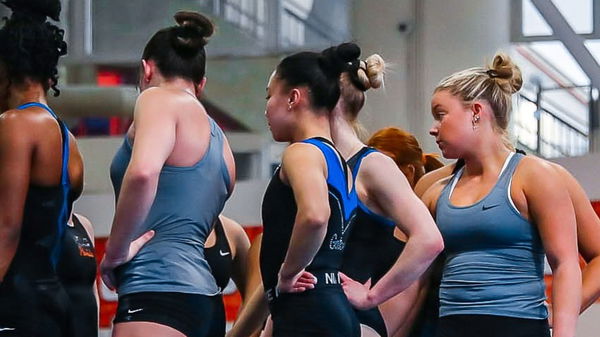

NCAA gymnastics is making a lot of noise right now, but not in the way most people thought it would. The 2025 season kicked off on the 4th of January with a major shock: no perfect 10s were awarded in the first week. Insane! This is the first time that’s happened since 2017, and it’s a pretty big deal, especially since perfect scores have become almost expected in recent years. In 2022, there were 71 perfect 10s, 84 in 2023, and 87 in 2024. So, to kick off this season with zero? That’s a massive change that’s getting a lot of people talking.
Even one gymnastics fan added on X, “fyi this is the 1st season since 2017 that no 10.0 was awarded in the 1st week of meets. don’t wanna get my hopes up but we could be seeing a 2005-level of cracking down on high.” It’s kind of wild to think about how many 10s were handed out in 2003 and 2004—in 2004 alone, 98 routines got a perfect 10. By 2005, the perfect 10 count had dropped from 98 to just 18, signaling a pretty major shift in how things were scored.
But why all these changes now? No. 10, why? We saw in the NCAA season-opening that the top teams, Oklahoma, won by 194.100, and LSU scored 197.300 but didn’t deliver solid performances. Really? Both teams came out on top in their opening meets. But the big surprise was that despite their strong routines, none of the athletes recorded a 10.
ADVERTISEMENT
Article continues below this ad

Even more surprising, some teams posted historically low scores. California, the defending NCAA runner-up, posted their lowest opening score in four years, and UCLA, with Olympic Champion Jordan Chiles leading the way, delivered their third-lowest opening score in more than 15 years. So yeah, something’s shifting in the college gymnastics.
The difference in scores from last year to this year is pretty striking, too. Only five gymnasts scored higher than a 9.90 on the floor this week, which is a huge drop compared to 2024’s first week, where 27 gymnasts hit that mark. In a sport where a perfect 10 was often needed to win, it’s pretty wild to see that 9.875s were enough to clinch titles this time around. So what’s going on here? Why are we seeing such a drastic change? Well, there is a reason!
The changing landscape of NCAA gymnastics scoring
Back in February, last year, Trinity Thomas, one of the top gymnasts for the University of Florida, did a one-and-a-half twisting backflip off the beam in the NCAA season. She nailed most of the landing but slightly shifted her right foot, which was enough to make the announcers groan. Still, she ended up scoring a perfect 10.0 for the routine. Later, Thomas posted on Instagram, replying to a congratulatory message with two words: “It wasn’t.” Her response kind of summed up the growing debate in NCAA gymnastics, where perfect 10s were becoming more and more common, even when there were visible errors.

ADVERTISEMENT
Article continues below this ad
Some were beginning to wonder if the judging system was losing its credibility, especially when routines with obvious mistakes still earned top scores. The surge in perfect 10s had a lot to do with the new wave of talent entering college gymnastics, especially after the NCAA allowed athletes to profit from their name, image, and likeness (NIL) in 2021. This change brought Olympians into the college scene, boosting competition and raising performance levels.
But with that came a lot of concerns. Critics pointed out that judges weren’t always sticking to the official Code of Points and weren’t deducting enough for small mistakes. There were even talks about the need for a whole new judging system. Coaches and analysts were calling for changes, like an independent evaluation of judges or even a new, streamlined code, to make sure the sport’s rise in popularity didn’t come at the cost of its integrity.
ADVERTISEMENT
Article continues below this ad
But then, the WCGA introduced a new system in May 2024 called the Collegiate Judging Issue (CJI), which aims to bring more consistency and fairness to scoring across the country. Under this new system, judges will be evaluated based on how closely their scores align with a target score. If their scores are closer to the target, they’ll get higher rankings and more high-profile assignments.
The idea is to create a more level playing field, and though it’s led to some surprising results so far, it could ultimately help bring more fairness to the sport. The focus is now less on rewarding perfection and more on consistency and accuracy in the evaluation of routines. This change might be one reason why we’re seeing fewer 10s this season, but it’s shaking up the way we think about scoring in college gymnastics.
ADVERTISEMENT
ADVERTISEMENT
ADVERTISEMENT
ADVERTISEMENT

